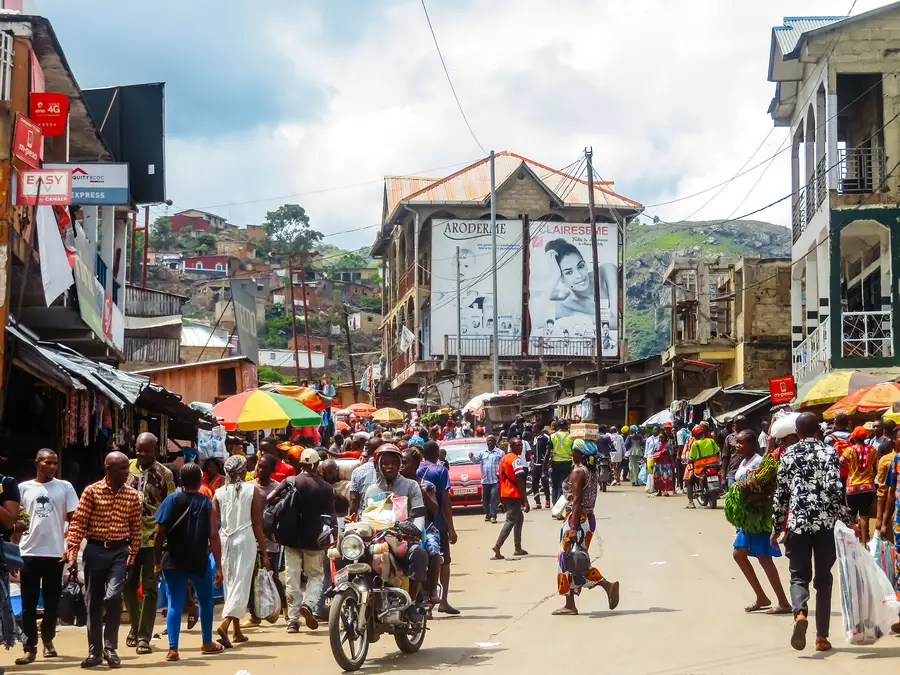
Private sector engagement is a critical aspect of sustainable development, especially in the face of today’s multi-faceted challenges and investment needs. Central Africa is no exception.
But what are the prospects for private sector engagement and investment in this region of the world? We spoke with Carl Mbeng, Central Africa Technical Lead for the RTI-implemented Power Africa Empower East and Central Africa Project, about the current and future outlooks for private sector engagement and investment in Central Africa.
Q: How would you describe the current investment climate in Central Africa?
To understand the current climate, we must look back. Central Africa hasn’t been attractive to investors in the past because of historical economic factors that can be traced back to how decolonization and independence were negotiated. In many Central African countries, governments have had a monopoly over key economic sectors like infrastructure, electricity, and water. Governments are beginning to understand the need for opening markets to the private sector and starting to liberalize their economies. They’re allowing more local and foreign private sector actors to enter the market and have a stake. There are still challenges, but this is making the investment climate more attractive.
Q: What are the biggest opportunities for private sector investment in the region?
Some sectors have a long history of private investment, like oil, gas, and natural resource exploration as well as transportation and tourism. The private sector has long been involved in these domains.
But now that governments are liberalizing their economies, we’re seeing the private sector get more involved in key sectors such as power generation (including activities across the entire power value chain), infrastructure development, residential and commercial real estate, and manufacturing. As residents are more exposed to global markets, they’re looking for more from their governments. Information technology is one example: the Central African Republic (CAR) is one of the fastest growing areas in telecommunications in the region and, much like the rest of the region, mobile money has taken off in the country.
We’re also seeing more private sector involvement in healthcare such as medical equipment supplies, pharmaceuticals, and hospital and health center development. Even with this, there’s still a lot of room for more private sector involvement in the health sector.
Q: What challenges must be addressed to unlock these opportunities?
When I talk about the private sector I’m talking about both local and foreign companies. Local companies face some big hurdles in access to capital – there's limited financing for local companies to do big, transformational projects like heavy industries, telecommunications, and mining and mineral extraction.
Governance is the primary challenge that must be addressed. Most companies want to operate in a fair market and have certainty about their investments, taxes, legal issues, and more. Investors also need certainty. Governance – including policy and regulation – can help provide this certainty.
In Central Africa, legal and fiscal certainty is very low. Corruption is still a big issue, and governments lack capacity in implementing and enforcing policies and regulations. If Central Africa can successfully unblock these governance issues, they will attract more private investment, which will help solve financing issues like the ones local companies face.
Q: What role can the private sector play in enhancing the accessibility and reliability of electricity in Central Africa, and what innovative solutions have shown promise in this region?
While the government’s role in improving energy access in Central Africa remains relevant, the role of the private sector is becoming increasingly significant given how large the energy deficits are.
In Central Africa, little work has been done to truly understand the energy potential of different power generation sources like hydropower, solar, and natural gas. The private sector can help governments uncover this potential, plan properly, and make informed decisions on how to resolve energy deficit issues. The private sector can also help bridge gaps in insufficient public funding generation and transmission infrastructure in Central Africa. In the Democratic Republic of the Congo (DRC), for example, the last time the government invested in new generation infrastructure was the 1970s. Meanwhile in the CAR, installed power capacity is well below what is needed for its population of 6.1 million people. Private investment in infrastructure, like building greenfield sites and refurbishing existing ones, can help overcome these deficits.
The private sector also brings a lot of innovative technology to these deficit issues – from geospatial information that can enhance client mapping and decision-making to exploring Internet of Things (IoT) opportunities for energy savings and technology solutions for improving the performance of utilities. Last but not least, the private sector is instrumental in financing and payment solutions for renewable energy.
Q: How do private sector investments impact local communities in Central Africa?
In rural areas, you can see the direct impact of the private sector very clearly. Any significant private investment in these areas not only impacts individuals but helps the whole community become more economically attractive and vibrant in a short amount of time. For example, some rural communities have been farming tea for 50 years with no major investment. If the private sector comes in and sets up a tea factory, you’ll immediately see the community transform: youth will be employed, more money will circulate locally, better technology for farming will help the factory but also indigenous farmers in the community, and people will start getting better access to healthcare and education.
In urban areas, private investment can also have a major impact. When a company enters a market in Central Africa, much of the local workforce has no experience in that sector. The company not only provides local jobs but comes in with training and educational programs that build the skills of the local workforce. The social conditions of those who are hired tend to immediately increase. At a national level, the government also stands to benefit from taxes from the company and the goodwill that’s built with residents as people have a new avenue for income to improve their lives.
Q: What is the role for development partners in private sector engagement in Central Africa?
Development partners play a critical role. While governments are often focused on immediate demands —such as paying civil servants, building infrastructure, and addressing pressing needs—they may need additional support and resources for long-term research, policy development, and human development initiatives. This is where donors, like USAID, and development finance institutions, like the World Bank, can make a significant impact. By leveraging their resources to help provide catalytic capital or reduce risks, they can unlock financial resources into key sectors. They play an important role in working alongside governments and other actors to improve the enabling environment, strengthen policy, and boost local capacity building, all with a focus on long-term impact. Donor agencies and development finance institutions need to make sure they deeply understand the country and then work with local partners to identify development goals and implement programs to achieve them.
Q: How do you foresee the investment landscape evolving over the next 5-10 years?
Most governments in Central Africa put regulations in place around 2000-2010 to attract private investment, particularly foreign investment. All these years later, it’s clearer where the gaps exist, what didn’t work, and what needs to be changed or done better. We’re seeing a trend in governments revising these policy frameworks to improve the investment architecture, such as addressing investor guarantees, access to finance, movement of capital in and out of the country, and litigation structures.
Investment impact takes time. In the next 5-10 years, we’ll start to see the impact of this current cycle of legislation revisions: More foreign companies will have the assurances they’re seeking, including more tax certainty and more clarity on financial regulation and dispute settlement. In short, the investment climate will be more attractive.
